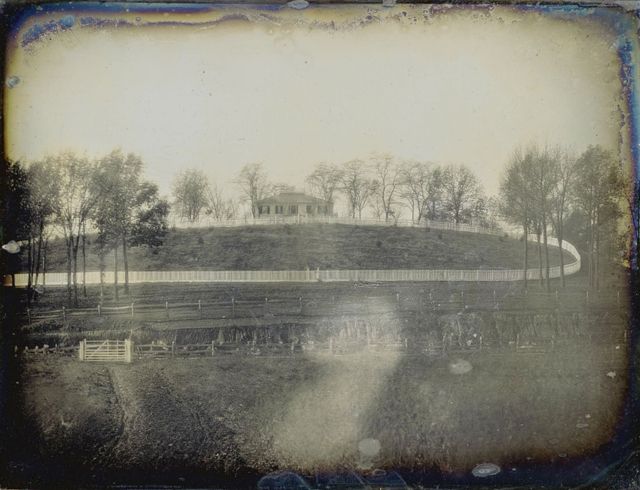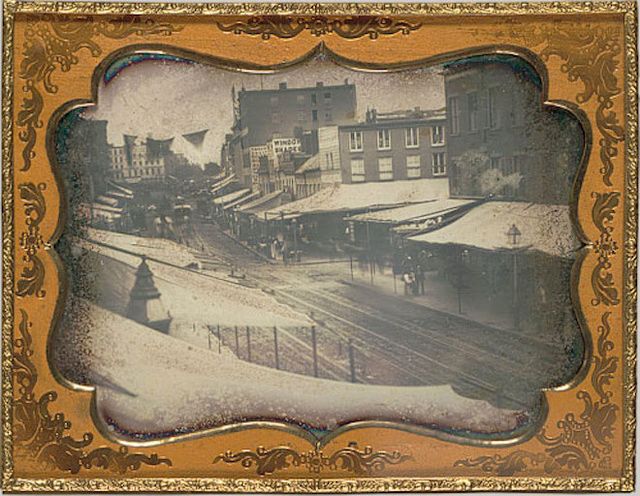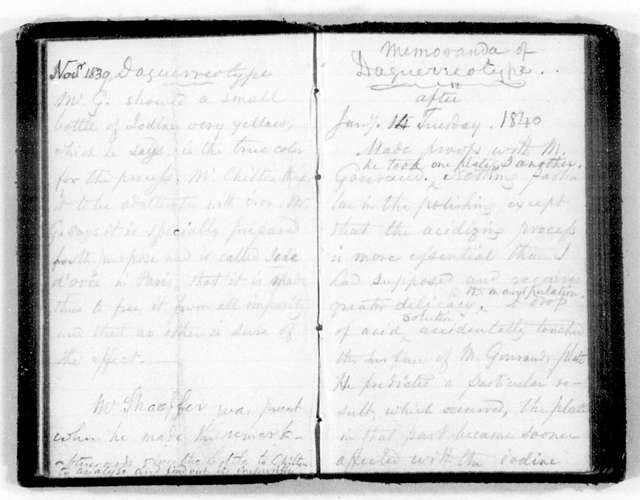NYC’s Forgotten ‘War on Christmas Trees’
Discover how an obscure holiday crackdown affects festive street vendors today!


Every so often, articles or social media appear claiming photographs to be the oldest taken in New York City. Such a designation is of course rather difficult – images may still be sitting in personal collections never shared, or simply buried deep in existing archives. In 2009, the below Upper West Side daguerrotype was sold at auction at Sotheby’s for $62,500 dating to October 1848 or earlier. The New York Times exercised its usual caution, writing that “a photo believed to be one of the oldest ever taken in New York City was sold.” But we think we’ve found something even older.

Upper West Side daguerrotype, dating from October 1848 or earlier. Photo courtesy of Sotheby’s.
In 2013, Gizmodo clarified a widely circulated Twitter post about a photo of Franklin Street in 1850 that was “believed to be the earliest photograph taken of New York City.” Gizmodo cited the Upper West Side photograph, as well as a Chatham Street daguerrotype taken between 1848 and 1853 which was the oldest known photograph before the discovery of the Sotheby image in a New England auction.

Chatham Street taken between 1848 and 1853. Image from Metropolitan Museum of Art in public domain
Researching our latest article on street photography Harvey Stein, we read New-York Historical Society’ curator Marilyn Kushner’s introduction to Stein’s new book Briefly Seen New York Street Life. Kushner traces Stein’s place in the lineage of New York City street photographers, beginning with one of the earliest known photographs of New York City, a 1839-1840 daguerreotype of the Unitarian Church in downtown Manhattan shot by Samuel F.B. Morse and John Draper
1839, we thought? This is far before the 1848 date for the Upper West Side photograph. And, it was taken by telegraph inventor Samuel Morse, then a professor of painting and sculpture at New York University and John William Draper, an inventory and chemist who founded NYU’s school of medicine. Gizmodo writes that the daguerrotype technology came over from France to New York in 1839, which makes sense given that Morse visited Louis Daguerre in Paris that same year. In fact, most of the early photographs taken by Daguerre were destroyed in a fire at his home and studio while Morse was visiting. Morse also wrote a letter to the New York Observer (his brother was the founder of the publication) describing the invention, causing quite a stir in America.

Notebook of Samuel Morse, on his daguerrotype experimentation. 1840. Located in the Library of Congress.
Furthermore, this Unitarian Church daguerrotype still exists – it’s in the Photographic History Collection of the Smithsonian National Museum of American History. The Smithsonian notes that the photograph was taken either in the fall of 1839 or the winter of 1840. Morse’s notebook on his experimentations with the daguerrotype is in the Library of Congress (scanned here) begins in January 1840.
Morse and Draper took many more, but Draper’s known photos from 1839 to 1840 focused on portraits and scientific matters. In 1840, he was the first person to take a photograph of an astronomical item – the moon. Were there more streetscapes? In one entry in January 1840, Morse notes that he took a view of City Hall and in February an exterior view towards Brooklyn, but his experimentations at this time were mostly for naught: “Result: Nothing!” he writes several times. After more failures, on February 12th he writes, “partially succeeded in distance, view towards Brooklyn.” Soon after that, Morse focused his energies on the telegraph.
Where might these early photographs be, if they still exist? We’re still looking but for now, it looks like Morse’s Unitarian Church image may likely beat out the Upper West side one for the title of “oldest known” photograph of New York City.
The author @untappedmich is also the author of the book Broadway, a collection of nearly 200 vintage photographs recounting the history of NYC’s famous street Broadway.
Subscribe to our newsletter